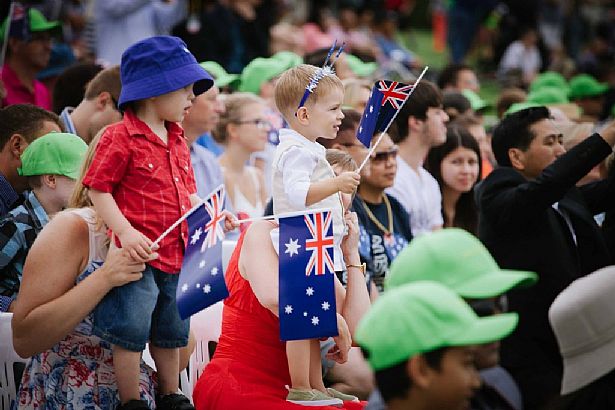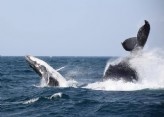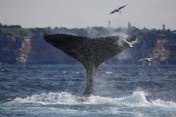News
History of Australia Day
See how many of the Australia Day facts below you already know. All facts are sourced from the essay ‘Celebrating Australia: A History of Australia Day’, researched and written by historian Dr Elizabeth Kwan. The full essay is available at Australiaday.org.au.
The Beginnings of Australia Day
The tradition of recognising 26 January as the day the colony of NSW was founded began in the 19th century when it was often referred to as ‘First Landing Day’ or ‘Foundation Day’.
Some immigrants who prospered in Sydney began marking the colony’s foundation with an anniversary dinner known as ‘an emancipist festival’. In 1818, on the thirtieth anniversary of the day, Governor Lachlan Macquarie made it a public holiday.
In 1837 the celebrations were extended to include the first Sydney Regatta – a tradition which still continues to this day.
Different Colonies, Different Celebrations
Throughout much of the 19th century, Australia was still made up of a number of separate colonies – a far cry from the unified country we know today.
While the anniversary celebrations in NSW often included toasts to ‘The Sister Colonies’: Van Diemen’s Land, Western Australia, and South Australia, each of these colonies celebrated their own beginnings, rather than that of New South Wales.
- Regatta Day (Van Dieman’s Land) – celebrated in early December to commemorate Abel Tasman’s claiming of the island for Holland in 1642, and the proclamation of its separation from NSW in 1825.
- Foundation Day (Western Australia) – Celebrated on 1 June to commemorate the arrival of settlers in 1829.
- Proclamation Day (South Australia) – Celebrated on 28 December to recognise the beginnings of British Government in the colony.
1888 Centenary Celebrations
The Centenary of New South Wales’ foundation marked the first time that all Australian colonies participated in the Anniversary celebrations.
By the time the centenary came along there were five sister colonies: Western Australia, Victoria, Queensland, Van Dieman’s Land, and South Australia.
Representatives of these colonies as well as some New Zealanders, attended the celebrations in NSW in honour of the occasion.
Across Australia, celebrations were held including sports races, picnics, sideshows and games, dancing, fireworks, and in Adelaide – an inter-denominational thanksgiving service.
The Uniform Celebration of Australia Day
In the wake of Federation, the Australian Natives’ Association (ANA) began campaigning in earnest for a National Day for all of Australia. The Victorian branch proposed to have 26 January celebrated throughout Australia as Australia Day on a Monday, making a long weekend. In 1931 the Victorian government agreed, and the other states and territories had followed suit by 1935.
From 1935 to Today
Since 1935 Australia Day continued to grow and develop until it became the celebration we know and love today.
In 1946 The ANA prompted the formation of an Australia Day Celebrations Committee to educate the public about the significance of the day. Soon similar bodies were created in other states, which in rotation acted as the Federal Australia Day Council. In 1979 this Council was overtaken by a National Australia Day Committee established by the Commonwealth Government in Canberra. In 1984 it then became the National Australia Day Council.
The first Australian of the Year was appointed in 1960. The award was bestowed upon medical scientist, Sir Macfarlane Burnet, and is still bestowed upon a deserving Australian every year. Since this time other awards have also been developed: Young Australian of the Year, 1979; Senior Australian of the Year, 1999, and Australia's Local Hero, 2003.
In 1984, when Australians ceased to be British subjects, ‘Advance Australia Fair replaced ‘God Save the Queen’ as Australia’s national anthem.
Four years later, the states and territories agreed to celebrate Australia Day on 26 January, rather than with a long weekend. During this same year Aborigines renamed Australia Day, ‘Invasion Day’ and The Bondi Pavilion protest concert foreshadowed the Survival Day Concerts that would be held in 1992.
From 1993, the National Australia Day Council has formally recognised the need to encourage reconciliation between Aboriginal and other Australians in Australia Day celebration.
As part of this commitment the Council has taken several steps towards this goal, including the introduction of a Australia Day Dawn gathering, ‘a moment of reflection before celebration’, to make Australia Day celebrations more inclusive.
In 2004, the Council’s re-ordering of priorities in its mission statement indicated a significant change in thinking since 2002, with its first priority listed as to ‘unite all Australians through celebration’ rather than the previous ‘Promoting Australian achievement’.
This article archived 22 Mar 2016
Recent News
What's New
See also:
News Menu:
Manly & Northern Beaches Information
- What's New
- Special Offers
- Shopping Showcase
- Weather Forecast
- Local Map
- Videos & Photos
- News
- Facebook Directory
Manly & Northern Beaches Businesses
- Business Search
- Business Classifieds
- Real Estate
- Education
- Wedding Services
- Functions & Conferences
- Community
- Health, Sport & Fitness
- Transport & Travel














Manly Australia Social Pages